What Parents Need To Know about pediatric foot
 Problems noticed at birth will not always disappear by themselves. You should not wait until the child begins walking to take care of a problem you’ve noticed earlier. It is best to take action when the child is a toddler to ensure better responsiveness to conservative treatment options.
Problems noticed at birth will not always disappear by themselves. You should not wait until the child begins walking to take care of a problem you’ve noticed earlier. It is best to take action when the child is a toddler to ensure better responsiveness to conservative treatment options.
Remember that lack of complaint by a youngster is not a reliable sign. The bones of growing feet are so flexible that they can be twisted and distorted without the child being aware of it. Walking is the best of all foot exercises, according to podiatric physicians. They also recommend that walking patterns be carefully observed. Does the child toe in or out, have knock knees, or other gait abnormalities? These problems can be corrected if they are detected early.
With the exception of infancy, going barefoot is not encouraged among children. Walking barefoot on dirty pavements exposes children’s feet to a variety of dangers including infection through accidental cuts,sprains or fractures. Another potential problem is plantar warts, a condition caused by a virus which invades the sole of the foot through cuts and breaks in the skin. They require extensive treatment and can keep children from school and other activities. Be careful about applying home remedies to children’s feet. Preparations strong enough to kill certain types of fungus can harm the skin.
Children’s Shoe Shopping Guide
As a child’s feet continue to develop, it may be necessary to change their shoe and sock size every few months to allow room for the feet to grow. Although foot problems result mainly from injury, hereditary factors, deformity, or illness, improper footwear can aggravate pre-existing conditions. Before parents invest in a new pair of childrens footwear, some foot factors need to be considered:
- Shoes that dont fit properly can aggravate the feet.
- Always measure a childs feet before buying shoes and fit the shoe to the foot. Never hand down footwear. Just because a shoe size fits one child comfortably doesnt mean it will fit another the same way. Not to mention that the practice of sharing shoes can spread fungi like athletes foot and nail fungus.
- Watch for signs of irritation. Redness is a sure sign that a shoe is too tight or too loose. If your child always wants to remove one or both of his/her shoes, this may be an unspoken sign that the shoes don’t fit properly.
- Examine the heels. When children begin to show in-toeing, they may wear through the heels of their shoes much quicker than outgrowing the shoes themselves. Uneven heel wear can indicate a foot problem that should be checked by a podiatrist.
Here are some other pediatric problems that you may find:
Vertical Talus
Club Foot
Congenital pes valgo planus
Sever’s Disease (Calcaneal Apophysitis)
Pediatric Flat Foot
Information collected from the American Podiatric Medical Association, Inc
PDF version of Dr. Timko’s famous Pediatric foot lecture here: Pediatric Foot Deformities
Accepted Insurance Plans
Health insurance plans in Missouri that Arch City Foot & Ankle are contracted to:
- United Health Care
- Blue Cross and Blue Shield
- Anthem BCBS
- Medicare
- Medicaid
- Railroad Medicare
- Cigna
- Aetna
- GHP
- Advantra
- Mercy
- Healthlink
- Healthcare USA
Please contact the office if your insurance plan is not listed above.
